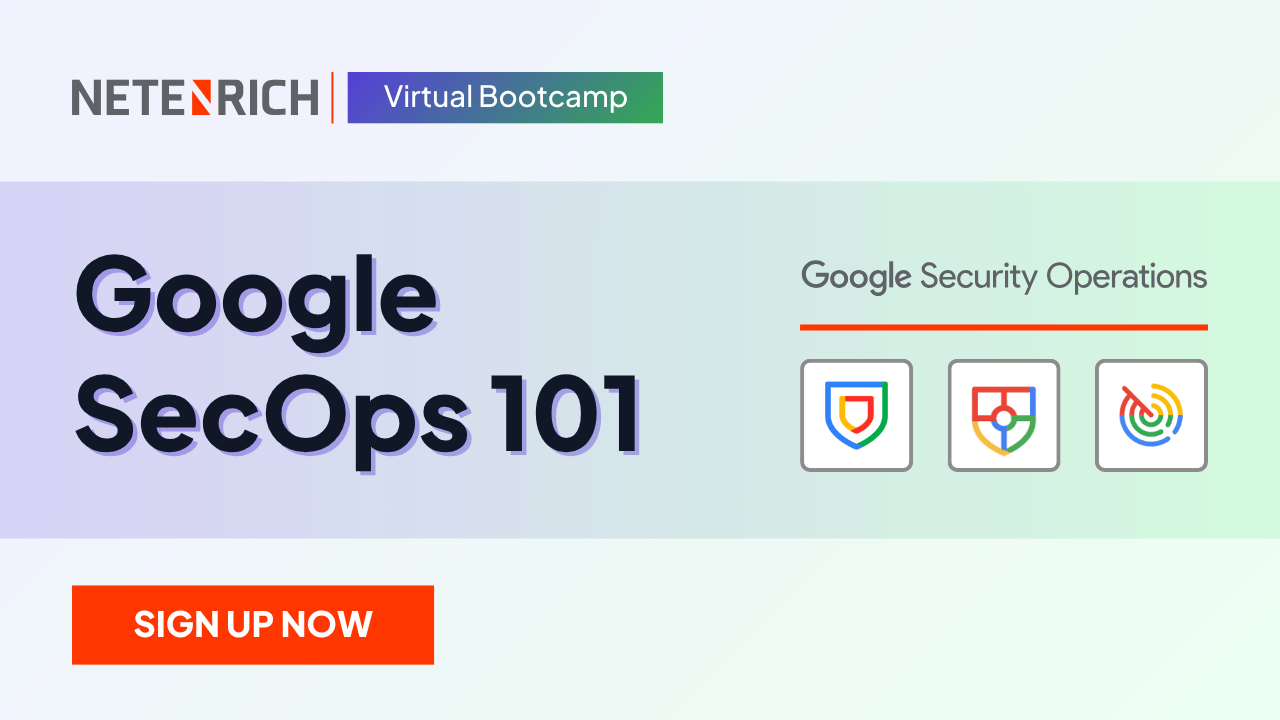Fundamentals
A practical guide to understanding modern security domains, technologies, and terminology. Learn and share with your peers.
Categories and Articles
Security Operations
+Google SecOps
+Managed Security, Detection and Response
+Risk Management and Cyberattacks
+Featured Resource
A CISO Playbook for 2025 and Beyond Reactive Security
Security operations can’t run on hope, SIEMs, or spreadsheets anymore. This guide equips executive leaders to drive outcome-focused SecOps: powered by AI, contextual risk, and cloud-native data strategies.
Netenrich Glossary
Advanced persistent threat
An APT or an advanced persistent threat is a stealthy threat actor that gains illegal access to a computer network and remains hidden for a prolonged period. An APT is typically a nation-state or state-sponsored group. Their main purpose is mainly political or economic. Every major business sector has recorded instances of cyberattacks by APTs seeking to steal, spy, or... More
Agile IT
Agile IT refers to IT operations that enable teams to adapt to changing requirements and consistently handle the complexities of emerging technologies. Although agile methodologies are usually synonymous with software development teams sprinting to code, test, and release products and applications, IT service delivery can also benefit by connecting development, security, and operations teams, instead of limiting them to organization... More
Alert correlation
IT operations are more complex than ever owing to heterogeneous environments and increasing tool stack. It requires a breadth of IT monitoring capabilities to quickly identify and resolve critical issues before they wreak havoc on the business. But alert volumes captured from different monitoring tools become overbearing. IT teams become frustrated with "alert fatigue" because they have to sort through and triage individual events... More
Alert fatigue
Alert fatigue or alarm fatigue occurs when IT teams are exposed to a large number of frequent alarms (alerts) that consequently become desensitized. It leads to longer response times or missing essential alarms. Large volumes of alarms, especially false ones, result in several unintended outcomes. Some consequences are a disruption in IT services, anxiety in teams, distrust in monitoring systems, and missed critical events. Some additional... More
Alert noise
Alert noise is listed as one of the biggest problems faced by DevOps teams.?79% of IT Ops personnel listed reduction in alert noise as one of their top priorities. False alarms pull time and resources away from issues that truly need to be addressed. It is compounded if you're receiving false alerts at the same time as the right alerts. ... More
Anomaly detection
Anomaly detection is the process of distinguishing a genuine security alert from false positives alerts in a SOC (Security Operations Center). Anomalies are a strong indicator of cyber threat triggered by unexpected but legitimate malicious actions.... More
Antivirus
A software that has been designed to detect and prevent contagions like viruses and malware from affecting your systems. Originally, the antivirus software was used for removing computer viruses. However, they slowly got more sophisticated as the cyber threats themselves got more potent. Antivirus software eventually started to provide protection from browser hijackers, ransomware, keyloggers, backdoors, rootkits, trojan horses, worms, etc. While... More
Artificial intelligence
The simulation of human intelligence in machines so that they programmed to think and act like humans. Artificial intelligence or AI plays a key role in modern industries and organizations. Netenrich’s goal is to provide highly-contextualized, resolution intelligence that comes via the confluence of artificial and human intelligence. Netenrich’s Attack Surface Intelligence uses impact analysis to measure the severity of potential threats and empowers your... More
Asset
Any data, device, or other components of the environment that supports information-related activities. When it comes to an organization's ecosystem, an asset is a component (such as data or device) that supports information-related activities. Assets generally include hardware (e.g. servers), software (apps), and confidential information. Your SOC team must be able to guarantee the Confidentiality, Integrity, and Availability of assets from... More
Asset governance, risk management, and compliance
Governance, risk management, and compliance aim to assure an organization reliably achieves objectives, addresses uncertainty, and acts with integrity. Governance is the combination of processes established and executed by the leaders in the company that is reflected in the organization's structure. Risk management is predicting and managing IT asset risks that could hinder the company from reliably achieving its objectives... More
Asset lifecycle management
Asset lifecycle management is the process of increasing organizational productivity by helping them make informed decisions on IT needs and services. IT teams can make better purchasing decisions by looking at various assets and their lifecycle stages. If a particular asset is about to expire, and if it's already in the inventory, teams will have more lead time to order... More
Asset risk intelligence
IT asset risk intelligence is the organization's ability to gather insights across its systems that help identify uncertainties; present them in the business context; enable the firm to make more informed business and security decisions in a proactive manner. To manage asset risks effectively, such as the criticalities of business processes and enterprise infrastructure, including applications, servers, network devices, data... More
Attack surface
The potentially vulnerable points that exist across all software, hardware, firmware, and networks of your company. Your goal is to keep your attack surface as small as possible. An organization's attack surface is a term that describes all the potentially vulnerable points that exist across all software, hardware, firmware, and networks of your company. It is the sum of different attack... More
Attack Surface Exposure
Through continuous monitoring, Resolution Intelligence Cloud’s Attack Surface Exposure (ASE) feature lets you find — and act fast to fix — hidden risks across your digital exposure on domains, certificates, open ports, vulnerabilities, misconfigurations, and more.... More
Attack Surface Management
Attack surface management (ASM) is about how organizations can proactively identify, address, and minimize potential vulnerabilities across their entire digital infrastructure.... More
Attack vector
In cybersecurity, an attack vector is the specific path or method a threat actor uses to breach your network or system.... More
Automate incident response
An automated incident response strategy enables your organization to be in a better position to take strong and quick actions in the event of an unexpected downtime to limit its effect on the overall business. Automation expedites typical repetitive tasks and responses, so little to no human intervention is required to detect and respond to incidents. Automation in incident response also helps... More
Autonomic computing
Autonomic computing refers to a machine, a device, or software that can operate with minimal or no human control, that is, it can operate independently. In addition, it is built to manage, heal, optimize, and protect itself automatically using autonomic systems.... More
Autonomic digital operations
Autonomic Digital Operations (ADO) is an approach that leverages digital technologies, such as artificial intelligence (AI), to create self-managing and self-optimizing models within IT operations.... More
Autonomic security operations
Autonomic security operations (ASO) is a new approach to security operations. It attempts to overcome the increasing challenges faced by traditional SOCs. ... More
Autonomous computing
Autonomous computing means that a machine, a device, or software can operate with little or no human control — in short, it can independently.... More
Subscribe for updates
The best source of information for Security, Networks, Cloud, and ITOps best practices. Join us.






